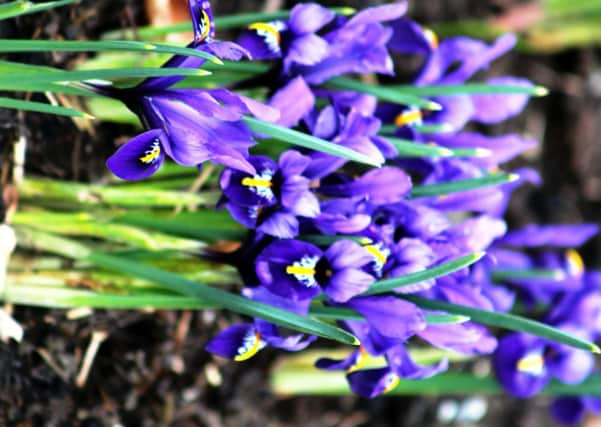Iris exerts a charm far beyond its physical size


The reticulata and Juno irises, which bloom as early as January and February respectively, bring colour and form to dark days in the garden. And yet they rarely achieve praise; the accolades are heaped upon the exotic and colourful lovelies which appear in summer.
But there are people who regard these stunning plants as something very special, and members of the British Iris Society will be in Harrogate today and tomorrow to fly the flag for the ‘rainbow’ flowers. The event, at RHS Garden Harlow Carr, is the Spring Iris Show, two days of talks, demonstrations and displays devoted to this very special family. (rhs.org.uk/harlowcarr)
Advertisement
Hide AdAdvertisement
Hide AdIrises come in all sizes, from the small to the tall – which can be very tall. While the average can usually stand on their own stem, the giants need help in the form of a stake. Otherwise, they have a tendency to fall flat on their pretty faces.
The bearded varieties are among the most stunning of all garden flowers. They take early summer by storm, scenting the air with sweet fragrances and stunning the eye with their colour and shape. They revel in the sun, so a choice site is one which catches the rays all day.
Bog irises are another breed entirely but, although they like to have their roots deep in damp soil (or even in water), they exude the family traits of shape and colour. The biggest threat to their annual show is the snail which delights in steadfastly working its way up the sword-like leaves to get to grips with the succulent petals.
There are other irises – including the Japanese clematis-flowered Iris which, given an acid soil, will produce masses of clematis-like blooms.
Advertisement
Hide AdAdvertisement
Hide AdThe wild Iris reticulata occurs in and around the Caucasus mountains (in Turkey, the Republic of Georgia, etc). This wild iris has been extensively cultivated, resulting in over a dozen different named varieties, most in beautiful shades of blue and purple. The Iris reticulata is the species of dwarf Iris which is most often sold commercially.
Iris reticulata bloom very early in the spring. The flower is quite large in relation to the plant as a whole, and has a wonderful fragrance, somewhat like a violet. And they are very easy to grow.